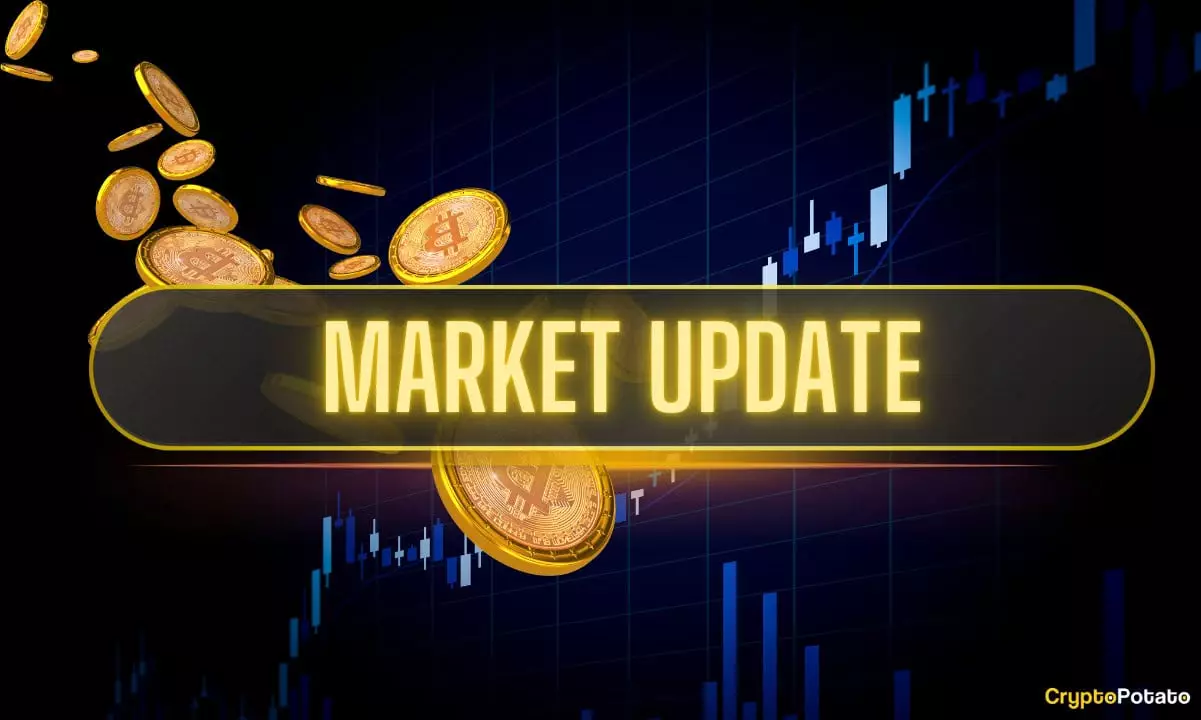Bitcoin’s flirtation with the $100,000 mark has sent shockwaves through the cryptocurrency community, embodying both an exhilarating boom and an ever-present reality check. The dream of surpassing this psychological milestone became momentarily tangible last week, ignited by promising news of a trade deal between the U.S. and China. Following a tariff reduction announcement from these economic behemoths, Bitcoin shot upwards, crossing the $105,000 mark for the first time in months. However, investors soon learned that the crypto playground has rules of its own, as a sudden downturn swiftly quashed the celebratory hopes, knocking BTC back under $101,000 soon after. What was once a beacon of optimism transformed into a landscape riddled with volatility.
This might be the perennial nature of Bitcoin—one minute it’s soaring triumphantly into uncharted territory, and the next, it’s getting slapped down by reality. The resilience to stay above the six-digit threshold suggests a underlying strength; yet, it also raises eyebrows. Is Bitcoin’s fixation on a specific price setting it up for vulnerability, or is it simply the nature of cyclic markets? This hinges on the adoption dynamics, investor behavior, and the forces driving macro trends.
The Influence of CPI and Interest Rate Speculation
The Consumer Price Index (CPI) numbers have an undeniable sway over investor sentiment. Slightly better-than-anticipated data came out this week, leading many to anticipate potential interest rate cuts. While such expectations usually lead to market optimism, Bitcoin’s price, paradoxically, hovered relatively flat. It’s illustrating a stark reality: even positive economic indicators might not hold the same weight in the world of cryptocurrencies, revealing Bitcoin’s stubborn inclination to exist in its own realm, separate from traditional economic indicators.
In fact, as other cryptocurrencies surged based on burgeoning interest from retail and institutional investors alike, Bitcoin appeared to be gasping for momentum. Ethereum, Dogecoin, and various altcoins showed double-digit gains, raising questions about Bitcoin’s market dominance. Is it the legendary ‘digital gold,’ or merely one player in a rapidly diversifying game? The recent flattening response during moments that should incite enthusiasm is troubling, and it signals a shift of focus among investors.
The Rise of Alts and What It Means for Bitcoin
Many in the crypto community are whispering about an “altseason,” a phenomenon where alternative cryptocurrencies experience gains that eclipse Bitcoin’s performance. This potential trend complicates the narrative that Bitcoin is the end-all-be-all of crypto investments. Five major indicators suggest that altcoins may have finally begun to steal the spotlight, continuing to inch toward price discovery while Bitcoin lags behind. If Bitcoin remains stuck while newbies enter the game excitedly for the next big altcoin, this could jeopardize its market dominance in the long term.
Former BitMEX CEO Arthur Hayes predicts that capital controls could propel Bitcoin to unprecedented heights by 2028, but if Bitcoin loses its positioning against more versatile and quicker-to-adapt altcoins, its journey may lead to stagnation instead of growth. In times of market uncertainty, the nimbleness of altcoins provides a crucial advantage, leading to a broader speculation that Bitcoin could be losing its grasp on being the market alpha.
A Closer Look at Investor Behavior: Whales vs. Retail
Contrasting behavior between Bitcoin’s whales and retail investors provides further context to what’s really happening in the market. Recent statistics reveal that whales have been hoarding significant quantities of BTC—nearly 83,000 Bitcoins—while retail investors are opting for sell-offs. These diverging strategies hint at a deeper market psychology: whales are preparing for the next surge, while smaller investors may be capitalizing on short-term gains as they offload their assets, possibly nearing what many perceive as the peak of this cycle.
Such behavioral analytics are not just fascinating but necessary for investors, especially those adopting a center-right investment philosophy that balances risk with insight. If retail investors indeed perceive themselves closer to taking profits rather than reinvesting, it could mean the end of the Bitcoin honeymoon phase—at least for now.
The Balancing Act of Crypto Investments
What we’re witnessing is more than just price fluctuations; it’s a balancing act of investor sentiment, economic indicators, and speculative trends. Bitcoin stands as a testament to the volatile capabilities of digital currencies. As much as it has the potential to enthrall investors with promises of legacy wealth and a new financial narrative, it’s now clear it must contend with ambitious altcoins for the hearts and minds of the crypto community.
In scenarios like this, an economic mindset rooted in center-right liberalism espouses a calculated approach to wealth generation, suggesting caution may be warranted. While Bitcoin can be a significant component of one’s portfolio, it can no longer be the sole focus. The evolving landscape of altcoins offers both threats and opportunities that demand recognition, balance, and adaptation. The battle for dominance has only just begun, and both Bitcoin and its altcoin counterparts must prepare for unprecedented challenges ahead. Each can play a role; the question remains: who will lead the charge?

